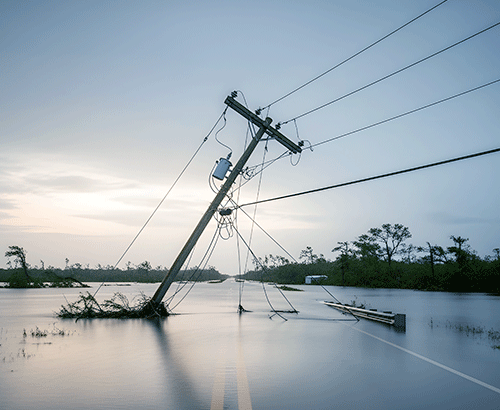How to Win in an Uncertain Heavy Civil Construction Market

How heavy and highway construction contractors can use good insights, facts and forecasting tools to pave the way to future success (in any market conditions).
The global pandemic has spared very few industries, with the domestic construction industry feeling some of the biggest impacts of the unexpected, worldwide COVID-19 outbreak. With the pandemic continuing to take a toll on human life, livelihoods and organizations, the heavy and highway construction segment has found itself between a rock and a tight spot as federal funding fluctuates, projects are postponed and business priorities continually shift.
For example, it’s natural to assume that the pandemic’s impacts will be lessened by the promise of federal support to rebuild critical infrastructure. However, the daily news reports don’t necessarily align with how the heavy and highway construction industry typically behaves—both during and after an economic recession.
For this and other reasons, reading one or two news or market reports and reimagining an entire business model around them is not a smart move right now. Instead, engineering and construction (E&C) firms must consider several alternative contexts and then develop strategies that define new ways to play—and even win—in these times of uncertainty. Doing so allows an executive team to focus on both executing current strategy as well as building alternative plans that will enable quicker shifts as context changes.
Almost a Quarter of Heavy/Civil Contractors Are Unprepared
According to a recent FMI survey, 1 in 5 heavy/highway contractors had yet to develop scenario plans for 2021 and 2022. That means 20% of these contractors are waiting around for something dramatic to happen that will either 1) indicate things will return to “normal” or 2) point them in the right direction for the next years.
Many of the 80% of companies that say they’ve developed their scenario plans are basically just using a series of best-case/worst-case financial projections. They use these projections to determine what overhead reductions are required to remain profitable along with a basic understanding of just how low they’re willing to bid in order to maintain backlogs.
These are barebones tactics that don’t work in any market—let alone during a combined pandemic-recessionary period. Given the crisis management required in the immediate aftermath of the pandemic, however, these knee-jerk reactions are understandable. It’s time to start thinking beyond those initial reactions, gain a better understanding of how this event will impact operational performance, and develop plans that provide the best opportunity for success across several “what if” scenarios.
Stagnation, Modest Growth or Home Run?
As contractors strategize for the next several years, FMI advises using a comprehensive approach focused on understanding the potential market shifts that could take place. Analyze the potential impacts of each broad future on the organization, develop strategies focused on good future decision-making, and consider these possible future scenarios:
Alternative Context One:
“Status Quo”
- The FAST Act is not reauthorized, but rather a continuing resolution is offered, extending funding at current levels. There is no significant federal stimulus bill for highway and transportation spending, but rather a modest bill that shores up states’ funding to make up for lost tax receipts during the COVID crisis.
- Heavy civil and highway construction will likely see impacts from state and municipal budget shortfalls in many areas while some, more financially sound areas will fare better. Those regions that see growth will become beacons for companies that are willing to branch out geographically.
- New highway construction takes a back seat to system preservation as departments of transportation (DOTs) conserve cash while maintaining system capacity.
- A limited number of large projects will be available. The few large projects that are tendered will become hypercompetitive as firms seek to shore up dwindling backlogs with large, anchor projects.
Alternative Context Two:
“The Modest Increase”
- FAST Act reauthorization occurs with a minimal increase in year-over-year spending, in line with prior increases. Federal stimulus happens in early 2021, but investment in highways and transportation remains modest.
- This scenario evolves much the same way the last several years have, in terms of market potential, but with a few twists. Decline in other segments creates a more competitive civil and highway sector as adjacent markets retrench (e.g., residential and commercial site development, private utilities, pipelines, etc.).
- Primary strategies likely support choosing the right markets/segments to pursue and differentiating based on capabilities and experience, where possible. Market intelligence on customer buying practices and competitive positioning will drive key strategic decisions, while business development becomes a means of identifying prospects and getting in front of opportunities early.
Alternative Context Three:
“The Home Run”
- Investment in civil infrastructure is considered critical to rebuilding the U.S. economy and is therefore a national priority.
- Some version of the significant highway and transportation bills currently under consideration is signed into law.
- State departments of transportation and transit agencies receive substantial federal assistance to shore up budget shortfalls.
- Primary strategies likely focus on managing growth profitably, including prioritizing opportunities and management discipline; building organizational structure and the processes to support it; and leveraging incentive compensation, training and development, and performance management tools.
It’s important to think of these as a potential range of future scenarios. Prepare for a blend of one or two of the above scenarios, versus taking the tunnel-vision approach on the one that will most likely materialize. The strategies that companies pursue will depend on exactly how the context evolves, and on the organization’s long-term aspirations and capabilities.
Creating a Winning Strategy
Going up against an invisible opponent is never easy, but that’s exactly what heavy and highway contractors are grappling with on a daily basis as they work to offset the impacts of COVID and a national recession. The good news is that there are steps companies can take to prepare themselves for success in any business conditions and regardless of which of the three scenarios outlined above actually materialize.
A good starting point is to define the scenarios most likely to develop in the market. Then, build out an understanding of how the market is likely to evolve over the next two to three years. As companies work through this exercise, they should factor in these key points:
- How demand in each segment will change and how the drivers of that change will transpire. In addition, sensitivity analysis of key drivers should inform thinking.
- How customer buying practices will shift. This will occur in ways that can likely be anticipated—and perhaps influenced—so it’s important to get clarity on this subject.
- How competitors are positioned for the market as it exists today and how they will likely react to changes; anticipate their reactions.
It’s important to note that the specific details of each company’s strategy will vary considerably based on current context and on the expected gap in market position that will occur as that context changes. To build out the most comprehensive plan, companies should consider:
- Market Insights—Staying ahead of market shifts requires tracking leading indicators that would dramatically impact go-to-market plans (i.e., demand drivers, buying practices and preferences, and the overall competitive landscape). Success in uncertain times demands the capacity and discipline to constantly monitor changes that are occurring and recognize trends before competitors.
- Go-to-Market Plans—Success in a new market environment requires adaptive go-to-market execution and the translation of existing capabilities into new market opportunities. Winning in a post-COVID market may require companies to position themselves differently to succeed in tangential markets. Focus and intentionality are key; business development efforts require very detailed, accurate guidance on how to best allocate time and resources.
- Preconstruction/Estimating—Cost and schedule certainty will be paramount for owners post-COVID. Contractors with advanced preconstruction services and design-assist capabilities will be best positioned to deliver. With overhead and revenue in flux, pricing models and overhead recovery strategies must be continuously updated and revisited to avoid pricing out of the market or bidding below costs.
- Operations—COVID-related market disruptions have significantly impacted productivity, shut down projects in many parts of the country, and created a hypercompetitive market environment. Companies will need to reset expectations around productivity—both labor and equipment—and look to restart projects that were shut down during the crisis (see our latest insights around Critical Project Restart Strategies).
- Organizational Design—There is no perfect structure; each option creates tradeoffs in how the organization goes to market that impact speed to market and control over decision-making. The right structure aligns resources to execute strategy most efficiently. Potentially significant changes in staffing could necessitate structural realignment to maintain organizational effectiveness and efficiency.
- Compensation Programs—Programs impacted by financial and operational performance work best when employee activities are aligned with strategic objectives and company values. The best plans achieve a fast (and high) return on investment (ROI) by attracting, motivating and retaining ideal talent while preserving equity returns (see Compensation Planning in Uncertain Times for more details).
Ready for a Multidimensional Chess Game?
Planning in a complex environment like the one heavy and highway contractors are operating in right now is a lot like playing a multidimensional chess game. Unlike a “normal” game of chess, this one requires companies to consider multiple possibilities and develop plans for multiple scenarios to be prepared to shift courses as market information unfolds.
Given the uncertainty in today’s market, a robust and iterative process—coupled with solid identification of key market fundamentals—will help companies navigate the uncertainty and detect any early warning signs. This, in turn, will ensure that those organizations are not only prepared for success but also ready to go head-to-head with the next disruption.



